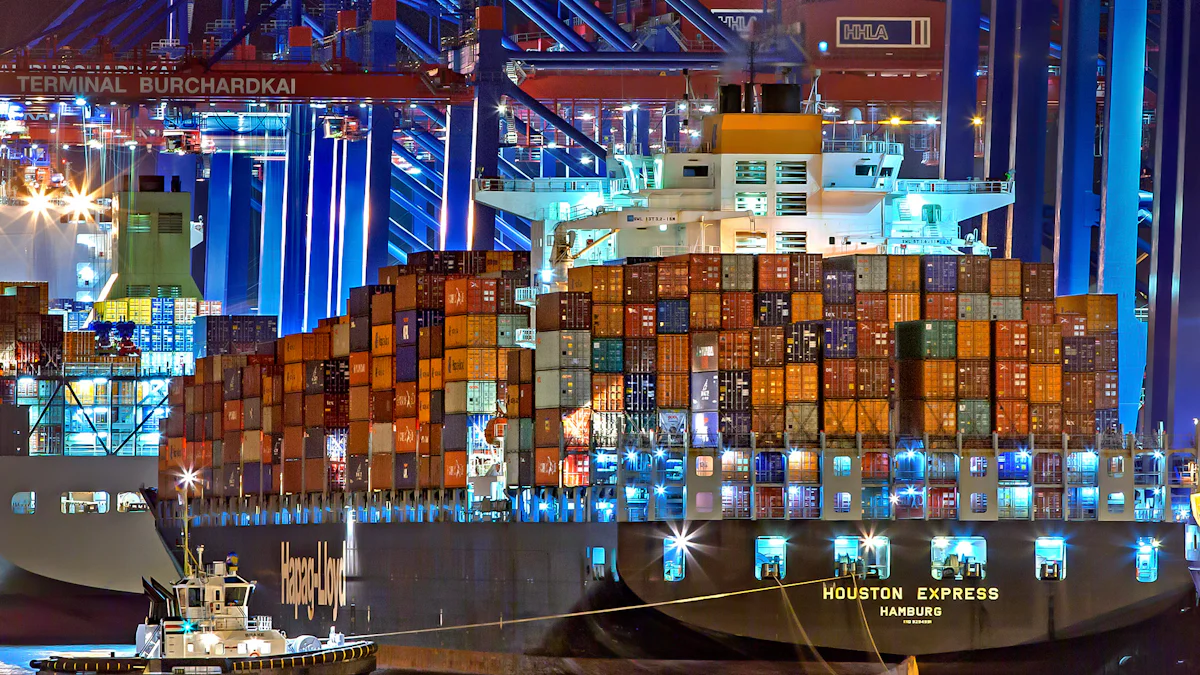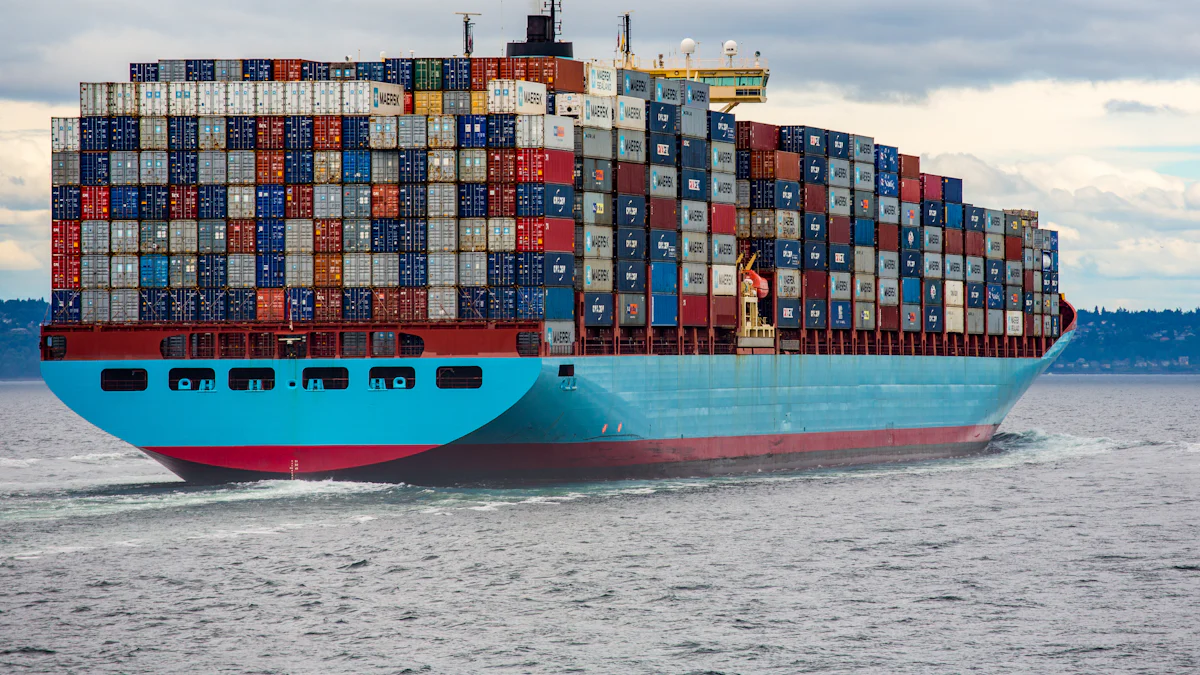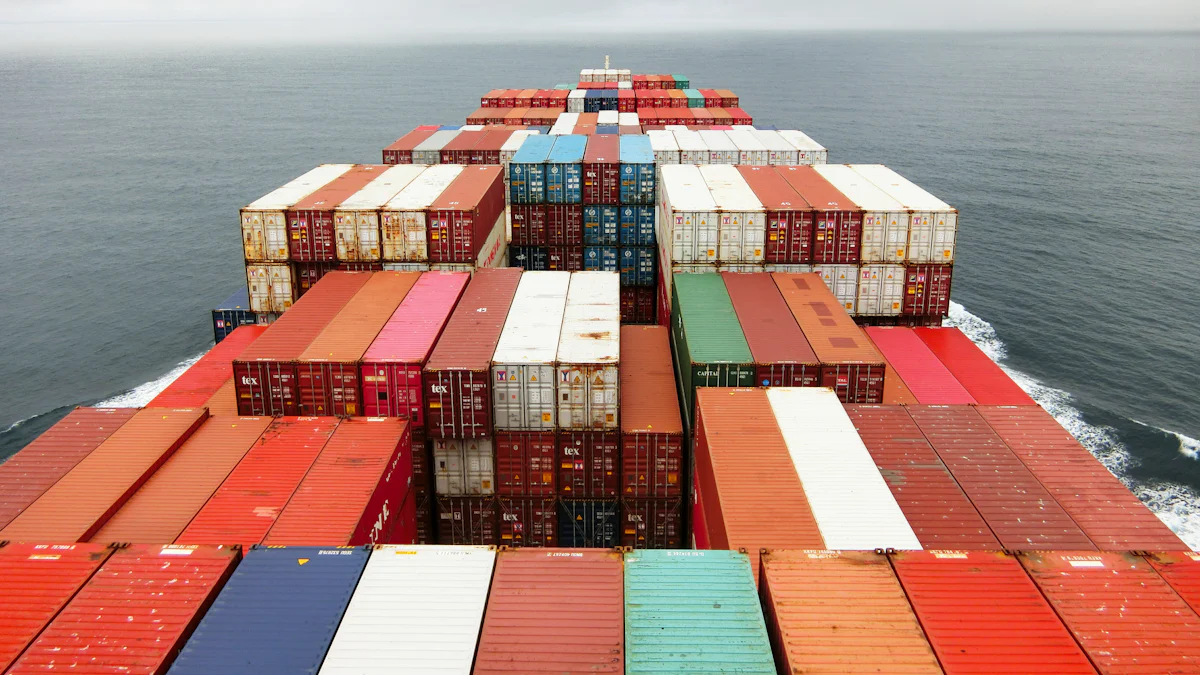Emerging Trends in Ocean Freight: A Market Dynamics Forecast

Ocean freight plays a crucial role in global trade, facilitating the movement of goods across continents. The industry is undergoing significant changes driven by technological advancements and evolving market demands. Understanding the emerging trends in ocean freight is essential for stakeholders to navigate the complexities of this dynamic sector. The market size was valued at USD 74,901.67 million in 2022 and is projected to reach USD 89,906.44 million by 2028, growing at a CAGR of 3.09%. These trends will shape the future of ocean freight, impacting efficiency and competitiveness.
Current State of Ocean Freight
Global Shipping Volumes
Key Statistics and Data
Global shipping volumes have experienced notable fluctuations. Demand reached record levels in Q1 2024, up by 9.2% compared to Q1 2023. Ocean freight container spot rates have risen sharply on the world’s top trades since May 2024. This increase prompted speculation that the peak season arrived early. The global container volumes are projected to see a modest increase of 3% to 4% in 2024. The global ocean fleet is anticipated to grow significantly by 7.8%, reaching an unprecedented 2.7 million TEU.
Major Trade Routes
China remains a dominant player in global trade routes. Chinese imports in December 2023 increased by 0.6% over November 2023 to 788,089 TEUs. However, these figures were still down 21.5% from the August 2022 high. China represented 37.4% of total U.S. container imports in December, an increase of 0.1% from November. Despite this increase, the figure was still down 4.1% from the high of 41.5% in February 2022. Major trade routes continue to be influenced by shifts in demand and geopolitical factors.
Industry Challenges
Supply Chain Disruptions
Supply chain disruptions remain a significant challenge for the ocean freight industry. Factors such as port congestion, labor strikes, and natural disasters contribute to delays and increased costs. The COVID-19 pandemic exacerbated these issues, leading to unprecedented disruptions in global supply chains. Companies must develop strategies to mitigate these risks and ensure the smooth flow of goods.
Regulatory Changes
Regulatory changes also pose challenges to the industry. Governments worldwide are implementing stricter regulations to promote sustainability and environmental responsibility. These regulations require companies to adopt greener practices and reduce carbon emissions. Compliance with these regulations often involves significant investments in new technologies and processes. Failure to comply can result in hefty fines and reputational damage.
Technological Advancements
Automation and Digitalization
Technological advancements are transforming the ocean freight industry. Automation and digitalization are playing a crucial role in enhancing operational efficiency. Automated systems streamline various processes, reducing the need for manual intervention. Digital platforms enable real-time tracking and monitoring of shipments, providing greater visibility and control. These technologies help companies optimize their operations and improve customer satisfaction.
Impact of IoT and Big Data
The Internet of Things (IoT) and Big Data are revolutionizing the industry. IoT devices collect vast amounts of data from ships, containers, and ports. This data provides valuable insights into various aspects of the supply chain. Big Data analytics enables companies to analyze this data and make informed decisions. For example, predictive analytics can forecast demand and optimize inventory levels. Machine learning algorithms can predict port arrival times and assess shipping risks. These technologies enhance the efficiency and reliability of ocean freight operations.
Emerging Trends in Ocean Freight

Sustainability Initiatives
Green Shipping Practices
The ocean freight industry is increasingly adopting green shipping practices. Companies are transitioning from traditional heavy oils to more eco-friendly alternatives. This shift reduces carbon emissions and promotes environmental sustainability. Green shipping corridors are being established to facilitate these practices. These corridors require significant infrastructure investments but offer substantial business opportunities for energy companies and ports.
Regulatory Compliance
Governments worldwide are implementing stricter regulations to ensure environmental responsibility. These regulations mandate the reduction of carbon emissions and the adoption of sustainable practices. Compliance with these regulations often involves significant investments in new technologies. Companies must stay informed about these changes to avoid hefty fines and reputational damage.
Market Consolidation
Mergers and Acquisitions
The ocean freight industry is experiencing a wave of mergers and acquisitions. Major players are consolidating to enhance their market presence and operational efficiency. These mergers create larger entities capable of offering more comprehensive services. The consolidation trend aims to streamline operations and reduce costs, benefiting both companies and consumers.
Impact on Competition
Market consolidation impacts competition within the ocean freight industry. Larger entities dominate the market, making it challenging for smaller players to compete. This shift can lead to reduced competition and higher prices for consumers. However, it also drives innovation as companies strive to differentiate themselves through better services and advanced technologies.
Shifts in Trade Patterns
Regional Trade Agreements
Regional trade agreements are reshaping global trade patterns. These agreements facilitate smoother trade flows between member countries. They reduce tariffs and simplify customs procedures, promoting increased trade volumes. Countries involved in these agreements benefit from enhanced economic cooperation and growth.
Impact of Geopolitical Events
Geopolitical events significantly influence trade patterns in the ocean freight industry. Political tensions and conflicts can disrupt trade routes and impact shipping schedules. Companies must remain adaptable to navigate these challenges. Strategic planning and diversification of trade routes help mitigate the risks associated with geopolitical uncertainties.
Future Forecast and Projections

Growth Opportunities
Emerging Markets
Emerging markets present significant growth opportunities in ocean freight. Countries in Asia, Africa, and Latin America are experiencing rapid economic development. These regions are investing heavily in infrastructure to support trade. Ports in these areas are expanding capacity to handle increased shipping volumes. Companies can capitalize on these developments by establishing strong trade links with emerging markets.
Technological Innovations
Technological innovations will drive future growth in ocean freight. Automation and digitalization will continue to enhance operational efficiency. Advanced technologies like AI and Big Data will optimize supply chain management. Predictive analytics will improve demand forecasting and inventory management. IoT devices will provide real-time data for better decision-making. Companies that invest in these technologies will gain a competitive edge.
Potential Challenges
Economic Uncertainties
Economic uncertainties pose significant challenges to the ocean freight industry. Fluctuations in global trade volumes can impact shipping demand. Economic downturns can lead to reduced consumer spending and lower trade activity. Companies must develop strategies to mitigate these risks. Diversification of trade routes and markets can help stabilize operations during economic fluctuations.
Environmental Regulations
Environmental regulations will continue to challenge the ocean freight industry. Governments are implementing stricter rules to reduce carbon emissions. Compliance requires significant investments in new technologies and processes. Companies must stay informed about regulatory changes to avoid penalties. Adopting sustainable practices will be crucial for long-term success.
Strategic Recommendations
Investment in Technology
Investment in technology is essential for future success in ocean freight. Companies should prioritize automation and digitalization to enhance efficiency. Implementing AI and Big Data solutions will optimize supply chain operations. Real-time tracking systems will improve visibility and control over shipments. Investing in technology will drive cost savings and improve customer satisfaction.
Diversification of Trade Routes
Diversification of trade routes is a strategic necessity. Relying on a few major trade lanes increases vulnerability to disruptions. Companies should explore new routes to mitigate risks. Establishing connections with emerging markets will provide new growth opportunities. Diversification will enhance resilience and ensure the smooth flow of goods.
The ocean freight industry is witnessing transformative trends. Key developments include technological advancements, sustainability initiatives, and market consolidation. The industry must navigate challenges such as supply chain disruptions and regulatory changes. Stakeholders need to stay informed and adaptable to thrive in this dynamic environment. The future of ocean freight looks promising with growth opportunities in emerging markets and technological innovations. Strategic investments in technology and diversification of trade routes will be crucial for long-term success.
See Also
Unveiling the Effects: Trends in Logistics Risk
Exploring 2024: Latest in Sea Freight Logistics
Analyzing the Future: LTL Freight Outlook
